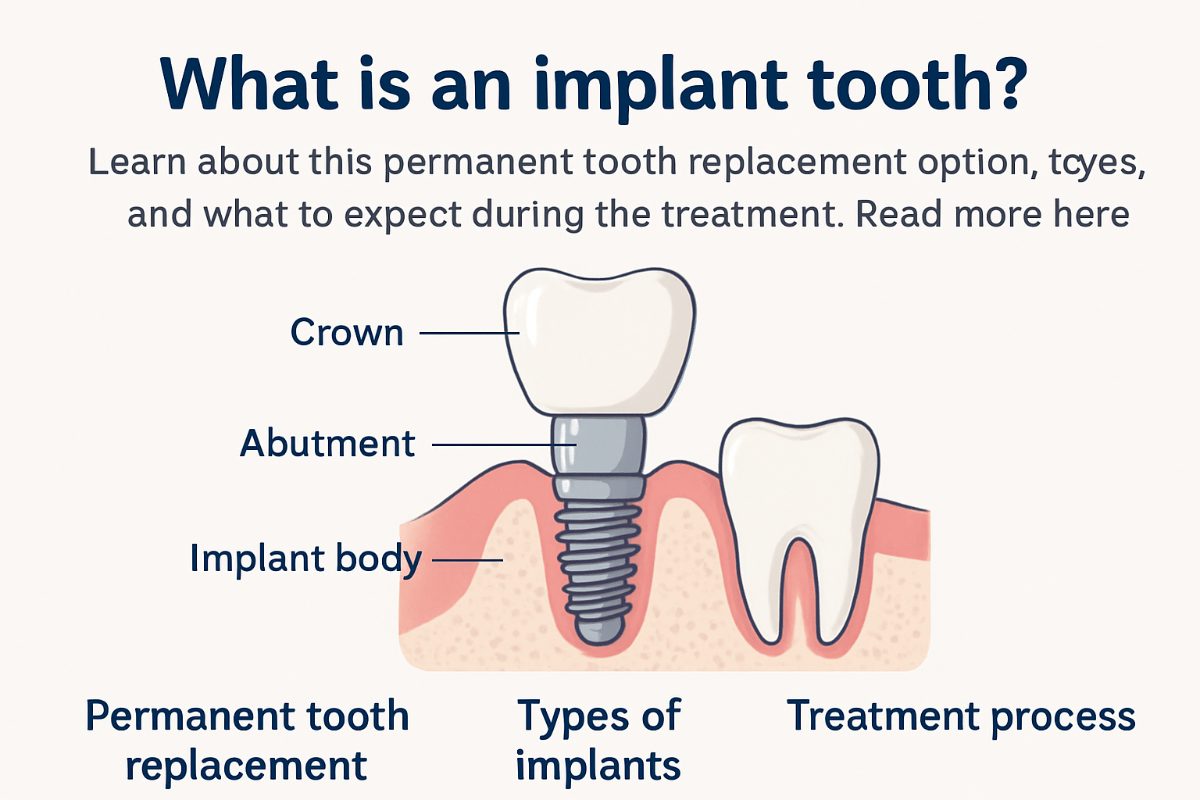If you’ve asked “what is implant tooth in Stillorgan, Dublin?” this short guide will answer that question clearly. You’ll learn the basic parts of an implant tooth, common implant types, who can get them, and what to expect during treatment. Read on for practical steps and a quick way to book a consultation.
What Is An Implant Tooth?
A implant tooth is a replacement tooth that looks, feels and works like a natural tooth. At its core, an implant tooth has three parts: a titanium screw (the implant) that sits in the jawbone, an abutment that links the implant to the visible part, and a crown that looks like your tooth. The implant fuses to bone for stability.
Materials are chosen for safety and durability. Implants are usually titanium or a titanium alloy because these bond well with bone. Crowns are made from ceramic or porcelain for a natural look. Overall, implant teeth are a safe, long-lasting option when placed by an experienced team.
Types Of Implants & How An Implant Tooth Works
Common types
- Endosteal (standard): the most common type placed directly into the jawbone.
- Subperiosteal: sits on the bone under the gum—used when bone height is low and grafting isn’t possible.
- Zygomatic and pterygoid: specialist options for severe upper jaw bone loss; used in complex cases.
Restoration options
Restorations can be a single-tooth implant, an implant-supported bridge for several missing teeth, or full-arch solutions such as All-on-4 or All-on-X for a complete set of teeth. The key to an implant tooth is osseointegration: the bone grows around the implant and locks it in place. That bone-implant bond is what makes the replacement tooth stable and able to handle normal chewing forces.
Who Is A Candidate & What To Expect
Before treatment, you’ll have a full dental exam, scans and a review of your medical history. Factors that affect candidacy include jawbone volume, gum health, smoking, and systemic conditions such as diabetes. Good oral hygiene and realistic expectations help a successful outcome.
Typical timeline: consultation and scans → implant placement → healing and osseointegration (usually a few months) → fitting the abutment and crown. Some cases allow for immediate temporary teeth. Additional procedures like bone grafts, sinus lifts or soft tissue grafting may be needed to create a stable foundation. Risks are low but include infection, nerve irritation or implant failure; experienced teams reduce these risks with careful planning and follow-up.
Recovery, Aftercare, Cost Factors & Why Choose Smile More Implant Centre
Aftercare helps protect your implant tooth. Keep good oral hygiene, follow diet advice (soft foods for a few days), and attend follow-up visits. Most implants last many years with normal care; regular check-ups help catch problems early. Repairs or crown replacement may be needed over time.
Cost depends on how many teeth are replaced, whether grafting is required, the type of implant and lab work, and the clinician’s experience. Complex cases and specialist implants cost more but can restore function when standard options won’t work.
Dr. Saad Ahsan, DDS, PG Dip Implantology, trained at Trinity College Dublin and holds multiple Royal College of Surgeons qualifications. At Smile More Implant Centre in Stillorgan, Dublin, Dr Ahsan and his team use advanced digital planning and offer care for complex cases, including zygomatic implants. The clinic is open seven days a week and focuses on evidence-based, anxiety-conscious treatment.
If you want to learn more or book a consultation to discuss “what is implant tooth in Stillorgan, Dublin” for your situation, contact Smile More Implant Centre to arrange an assessment.


